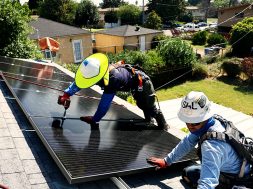
Rooftop solar runs into roadblocks
The state-owned electricity distribution companies’ apathetic approach coupled with the lack of appropriate financing options available in the market are seen to be impeding the uptake of rooftop solar in the country.
The state-owned electricity distribution companies’ apathetic approach coupled with the lack of appropriate financing options available in the market are seen to be impeding the uptake of rooftop solar in the country. The currently installed rooftop solar capacity stands at around 3,400 MW — far short of the 40,000-MW target set by the government for FY22. This segment comprises a significant portion of the 1,75,000 MW renewable capacity that the country wants to have by FY22.
Discoms tend to see rooftop solar primarily as a threat, fearing that it would lead to them losing paying clients. “While states have rooftop solar policies, in certain places we have seen discoms develop their own restrictive criterion over and above the approved regulations of the state,” Gagan Vermani, CEO, MYSUN, told FE. Sanjeev Aggarwal, CEO, Amplus Solar Energy, complained about discoms in Karnataka, West Bengal, and Odisha having complex approval processes for solar rooftops.
Aggarwal pointed out that while Gujarat doesn’t allow third party sale in rooftop, Maharashtra has recently tried to put wheeling charges and denying no objection certificates to non-net metered rooftop projects. Uttarakhand’s recent imposition of cross-subsidy on rooftop projects set up under the ‘Resco’ model was also seen as an additional hurdle. The Resco model, wherein rooftop solar projects are built and operated by the developer using its own capital, was seen to be taking the financing burden off the load of the consumer.
While finance is not an issue for large corporates taking up solar rooftops, developers are not being able to sign long-term power purchase agreement with small businesses and residential consumers who find it difficult to pay the upfront costs. Lack of appropriate credit rating of these entities make it hard for them to procure bank loans for this purpose. About 25% of the rooftop solar capacity was installed during January-June, 2018, mainly on the back of commercial and industrial entities.
However, “to sustain and build on this momentum, at some stage the untapped residential and the MSME segments need to be reached,” said Andrew Hines, co-founder, CleanMax Solar. “The commercial and industrial sector is dependent on lengthy decision making cycles, so faster adoption of solar in residential market is essential in meeting the targeted numbers,” said Rahul Mishra, CEO, Rays Future Energy.
“Though the Reserve Bank of India has identified residential rooftop solar as a priority sector for lending, the banks have not fully warmed up yet,” said Shravan Sampath, CEO, Oakridge Energy.
The banking regulator, in May, had revised its guidelines on lending to priority sector for primary (urban) co-operative banks and set a loan limit of `10 lakh per borrower for individual households opting to install solar rooftop systems. To address this challenge, a “first loss protection” programme would be a strong enabler for growth in this segment, Hines suggested.
















